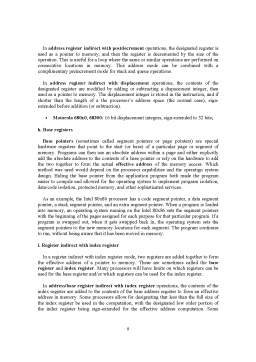Extras din referat
1. Fundamental Data Types
The fundamental data types of the Intel Architecture are
- integer
- ordinal
- real
- decimal
- bytes
- words
- doublewords
- quadwords (see Figure).
A byte is eight bits, a word is 2 bytes (16 bits), a doubleword is 4 bytes (32 bits), and a quadword is 8 bytes (64 bits).
a. Alignment of Words, Doublewords, and Quadwords
Words, doublewords, and quadwords do not need to be aligned in memory on natural boundaries.
(The natural boundaries for words, double words, and quadwords are even-numbered addresses, addresses evenly divisible by four, and addresses evenly divisible by eight, respectively.) However, to improve the performance of programs, data structures (especially stacks) should be aligned on natural boundaries whenever possible. The reason for this is that the processor requires two memory accesses to make an unaligned memory access; whereas, aligned accesses require only one memory access. A word or doubleword operand that crosses a 4-byte boundary or a quadword operand that crosses an 8-byte boundary is considered unaligned and requires two separate memory bus cycles to access it; a word that starts on an odd address but does not cross a word boundary is considered aligned and can still be accessed in one bus cycle.
b. Bytes, Words, Doublewords and Quadwords in Memory
c. Numeric, Pointer, Bit Field, and String Data Types
Although bytes, words, and doublewords are the fundamental data types of the Intel Architecture, some instructions support additional interpretations of these data types to allow operations to be performed on numeric data types (signed and unsigned integers and BCD integers). See Figure 29-3. Also, some instructions recognize and operate on additional pointer, bit field, and string data types. The following sections describe these additional data types.
Preview document
Conținut arhivă zip
- Data Types and Addressing Modes.doc













